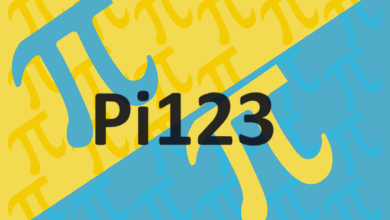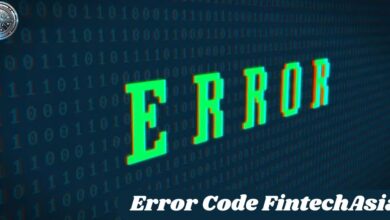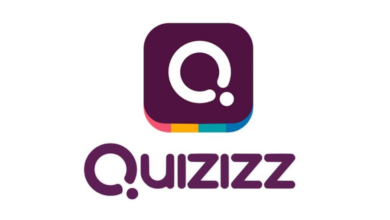Unveiling the Life and Work of Marie Calloway: A Deep Dive Into Her World

Introduction to marie calloway
Marie Calloway is an enigmatic figure in the world of contemporary literature. She is a name that has provoked intrigue, discussion, and debate since she first emerged onto the literary scene in the early 2010s. Known for her unapologetic approach to storytelling, Calloway’s work often explores themes of sexuality, relationships, self-exploration, and the complexities of human emotions in the digital age.
But who is she, really? And what makes her writing so compelling to some, yet so controversial to others? In this article, we will take an in-depth look at Marie Calloway’s journey, her work, and the lasting impact she has made on the literary world.
Early Life and Background: The Formation of an Artist
Marie Calloway was born in 1989, in a small town in the United States. Not much is known about her early life, as she has kept many aspects of her personal history private. However, her upbringing and education played a pivotal role in shaping the writer she would become. Raised in a world that was rapidly becoming increasingly interconnected through the internet, Calloway’s life would inevitably be intertwined with the online world.
From a young age, she was drawn to writing and literature, finding solace and understanding in the written word. It was during her time at college that Calloway’s writing began to take shape. She started sharing her thoughts and experiences on various online platforms, where her raw, honest, and sometimes uncomfortable reflections gained attention.
The Birth of “What Purpose Did I Serve in Your Life?”
Marie Calloway’s breakthrough came with the publication of her controversial debut novella, What Purpose Did I Serve in Your Life? This book, which was self-published online, created a stir for its brutally honest portrayal of intimacy, relationships, and personal identity. The novella follows the protagonist, who shares strikingly personal anecdotes, including her sexual encounters, emotional struggles, and the complexities of navigating life in the digital age.
In this work, Calloway did not shy away from detailing her own experiences with sex, self-worth, and the often blurry lines between fiction and reality. Many readers and critics saw the novella as an intimate, unfiltered exploration of a woman’s inner life—one that had long been hidden or ignored in mainstream literature.
The book’s graphic content and candid nature made it a hot topic of conversation, with some lauding Calloway for her bravery in writing such a personal account, while others criticized her for being too raw, too explicit, or even too self-indulgent. Despite the mixed reactions, there was no denying the impact of her work—it was a reflection of the complexities and contradictions of modern life, particularly in an era dominated by digital communication and social media.

Marie Calloway and the Art of Self-Exploitation
One of the most striking features of Marie Calloway’s writing is her apparent self-exploitation. She is often accused of laying bare her most intimate moments for the sake of art, and yet, this is precisely what makes her writing so intriguing. In many ways, Calloway’s work challenges the traditional boundaries of privacy, vulnerability, and artifice.
Calloway’s willingness to expose her personal experiences, especially those that revolve around sexuality and relationships, blurs the lines between author and character. Critics have argued that her work can be seen as self-exploitation, but it is also an exploration of the limits of what can be shared in public and what should remain private. By openly discussing topics that are often considered taboo or uncomfortable, Calloway forces her readers to confront their own preconceived notions about gender, sexuality, and vulnerability.
Is this self-exploitation, or is it simply an artist’s way of using their own life as a canvas? It’s a question that has sparked much debate, but there’s no doubt that Calloway’s approach to self-exposure is a key component of her work.
The Influence of Social Media on Marie Calloway’s Work
Social media plays a significant role in Marie Calloway’s work. From the early days of her online presence, she has used platforms like Tumblr, Twitter, and Instagram to share her thoughts, experiences, and writing with the world. In many ways, Calloway’s work can be seen as a product of the digital age, where personal experiences are often shared publicly and rapidly, and the boundaries between private life and public persona become increasingly blurred.
Through her use of social media, Calloway has built a unique relationship with her audience. She has often referred to her online followers as her “readers,” and in turn, many of them have felt a sense of ownership over her work. This has created a dynamic in which Calloway’s writing is not just a solitary act, but a conversation between her and her audience.
The rise of internet culture, particularly the ways in which people are constantly curating and sharing their lives online, is an important backdrop for Calloway’s work. In her stories, the line between public and private is constantly shifting, and her characters—often based on Calloway herself—grapple with the complexities of living in a world where everything is up for public consumption.
Calloway’s Controversial Online Presence and Its Impact
Marie Calloway’s online presence has been just as controversial as her writing. Over the years, she has become known not only for her works but also for her provocative posts, online persona, and sometimes divisive opinions. Her use of social media to share deeply personal thoughts and experiences has led to intense scrutiny, with many wondering whether she is blurring the line between performance and reality.
For example, Calloway has frequently used Twitter to discuss her relationships, personal struggles, and thoughts on fame and writing. In doing so, she has created a persona that is not just an author but also a figure of online fascination. She has gained both fans and detractors, with some praising her for being fearless and others criticizing her for using the internet as a tool for self-promotion.
But is her online presence merely a reflection of the hyper-connected world we live in, or is it something more calculated? Calloway’s ability to provoke reaction and maintain relevance in a crowded digital space has made her one of the most polarizing figures in contemporary literature.
The Feminist Reading of Marie Calloway’s Work
Marie Calloway’s writing has been the subject of feminist analysis, with many seeing her work as both a product and a critique of modern feminism. Her unabashed exploration of her sexuality, relationships, and emotional vulnerabilities challenges traditional gender roles and expectations, especially for women in the literary world.
In a way, Calloway’s work can be seen as an extension of second-wave feminist writings that pushed the boundaries of what women could express openly. Her unapologetic exploration of taboo topics—especially those related to sex and identity—forces readers to confront the complexities of gender and power dynamics.
However, Calloway’s approach to feminism is not without its critics. Some argue that her self-exploitation in her work detracts from feminist ideals, suggesting that she may be reinforcing the very stereotypes and limitations she seeks to challenge. Yet, her work continues to spark important conversations about agency, autonomy, and the ways in which women navigate a world that often tries to control their bodies and narratives.
The Reception of Marie Calloway: Praise, Criticism, and Everything In Between
The reception of Marie Calloway’s work has been anything but unanimous. Some readers praise her for her unflinching honesty, raw emotion, and ability to tackle uncomfortable topics with grace. They see her as a voice for those who have long been silenced, offering a much-needed alternative to the sanitized narratives that dominate mainstream literature.
On the other hand, many critics accuse Calloway of being overly self-indulgent or exploitative, reducing her personal life to fodder for art. Her work has been described as self-serving, with critics claiming that she is using her experiences to garner attention or create controversy.
Yet, despite the criticism, Calloway’s influence cannot be denied. She has carved out a unique space for herself in the literary world, one that challenges the status quo and forces readers to reconsider their assumptions about authorship, identity, and intimacy.
The Legacy of Marie Calloway: A New Wave of Writing?
As we look to the future, it’s clear that Marie Calloway’s legacy will continue to be felt. Whether you love her or hate her, there’s no denying the impact she has had on contemporary literature and online culture. Her work has inspired a new generation of writers to be more open, more vulnerable, and more willing to push boundaries in their own storytelling.
Calloway’s blending of the personal and the public, the intimate and the performative, has paved the way for a new wave of writers who are using the internet as a platform for self-expression. Whether or not you agree with her methods, her influence on modern literature is undeniable.
In the end, Marie Calloway’s work is more than just about the person behind the words—it’s about the larger conversation she sparks. It’s about what it means to be a woman, a writer, and a person in the digital age. And that, in itself, is a legacy worth examining.
Conclusion:
Marie Calloway’s journey as a writer and public figure is far from over. Her life and work continue to spark discussion, controversy, and admiration. As she continues to navigate the complexities of fame, art, and personal identity, her influence on both literature and online culture remains significant.
Whether you love her work or find it unsettling, one thing is clear: Marie Calloway has left an indelible mark on the literary world, and her story is far from finished.




